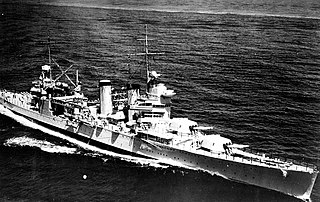
USS LST–542 was the lead ship of her class of tank landing ships built for the United States Navy during World War II. She was later named USS Chelan County (LST-542) for the county in Washington, the only U.S. Naval vessel to bear the name. The LST-542-class was built with a water-distilling plant and heavier armament than the earlier LST-1 class, which slightly decreased their payload.
USS LST-209 was an LST-1-class tank landing ship built for the United States Navy during World War II. Like most of the ships of her class, she was not originally named, and known only by her designation. From June to August 1951 she served a stint as a part of the Military Sea Transportation Service (MSTS), manned by a civilian crew, and renamed USNS T-LST-209. She was recommissioned under her original name 24 August 1951, and renamed USS Bamberg County (LST-209) on 1 July 1955. She was named for Bamberg County, South Carolina, the only U.S. Naval vessel to bear the name.

USS Pandemus (ARL-18) was one of 39 Achelous-class landing craft repair ships built for the United States Navy during World War II and was in commission from 1945 to 1946 and from 1951 to 1968. Named for Pandemus, she has been the only U.S. Navy vessel to bear the name.

USS Chesterfield County (LST-551), originally USS LST-551, was an LST-542-class tank landing ship built for the United States Navy during World War II and in commission from 1944 to 1955 and again in the late 1960s. Named after Chesterfield County, South Carolina, and Chesterfield County, Virginia, she has been the only U.S. Navy vessel to bear the name.

USS Chittenden County (LST-561), originally USS LST-561, was an LST-542-class tank landing ship built for the United States Navy during World War II. Later named for Chittenden County, Vermont, she was the only U.S. Naval vessel to bear the name.

USS Churchill County (LST-583), originally USS LST-583, was an LST-542-class tank landing ship built for the United States Navy during World War II and in commission from 1944 to 1946 and 1960 to 1968. Named for Churchill County, Nevada she was the only U.S. Navy vessel to bear the name.
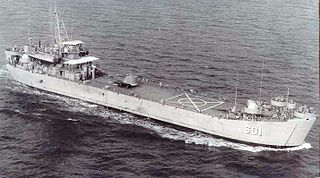
The USS Clarke County (LST-601), originally USS LST-601, was a United States Navy LST-542-class tank landing ship built during World War II and in commission from 1944 to 1955 and again in the late 1960s. Named after Clarke County, Alabama; Clarke County, Georgia; Clarke County, Iowa; Clarke County, Mississippi; and Clarke County, Virginia, she was the only U.S. Navy vessel to bear the name.

USS Clearwater County (LST-602), originally USS LST-602, was a United States Navy LST-542-class tank landing ship built during World War II and in commission from 1944 to 1946 and from 1950 to ca. 1957. Named after Clearwater County, Idaho, and Clearwater County, Minnesota, she was the only U.S. Navy vessel to bear the name. It was transferred to, and is currently in use by the Mexican Navy.
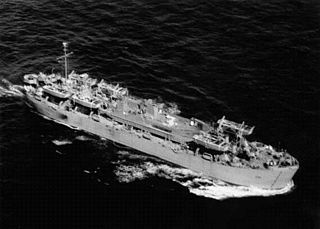
USS Coconino County (LST-603), originally USS LST-603, was a United States Navy LST-542-class tank landing ship built for the United States Navy during World War II and in commission from 1944 to 1955 and from 1966 to 1969. Named after Coconino County, Arizona, she was the only U.S. Navy vessel to bear the name.

USS Crook County (LST-611), originally USS LST-611, was a United States Navy LST-542-class tank landing ship built during World War II and in commission from 1944 to 1956. Named after Crook County, Oregon, and Crook County, Wyoming, she has been the only U.S. Navy vessel to bear the name.
USS LST-849 was an LST-542-class tank landing ship in the United States Navy during World War II. Late in her U.S. Navy career, she was renamed Johnson County (LST-849)—after counties in Arkansas, Georgia, Illinois, Indiana, Iowa, Kansas, Kentucky, Missouri, Nebraska, Tennessee, Texas, and Wyoming—but never saw active service under that name.
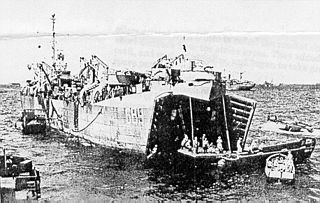
USS LST-689 was an LST-542-class tank landing ship built for the United States Navy during World War II. Late in her career she was renamed Daggett County (LST-689)—after Daggett County, Utah, the only U.S. Naval vessel to bear the name—but never saw active service under that name.

USS Dunn County (LST-742) was an LST-542-class tank landing ship built for the United States Navy during World War II. Named after counties in North Dakota and Wisconsin, she was the only U.S. Naval vessel to bear the name.
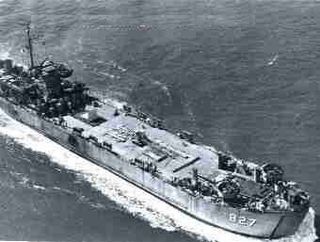
USS Hillsborough County (LST-827) was an LST-542-class tank landing ship built for the United States Navy during World War II. Named after Hillsborough County, Florida, she was the only U.S. Naval vessel to bear the name.
USS LST-1038 was a LST-542-class tank landing ship built for the United States Navy during World War II. She was later named Monroe County (LST-1038) after counties in seventeen U.S. States — the only U.S. Naval vessel to bear the name — but never saw active service under the latter name.
USS Colington (AG-148/AKS-29) – also known as USS LST-1085 -- was an LST-511-class tank landing ship launched by the U.S. Navy during the final months of World War II. Colington served as a supply and stores-issue ship for the U.S. 7th Fleet, and was decommissioned after the war.
USS LST-970 was an LST-542-class tank landing ship in the United States Navy. Like many of her class, she was not named and is properly referred to by her hull designation.

USS AFDM-2 (YFD-4) is an AFDM-3-class medium auxiliary floating drydock built in Mobile, Alabama by the Alabama Drydock and Shipbuilding Company for the U.S. Navy. Originally named USS YFD-4, Yard Floating Dock-4, she operated by Todd Shipyards at New Orleans, Louisiana for the repair of US ships during World War II. YFD-4 was renamed an Auxiliary Floating Dock Medium AFDM-2 in 1945 after the war. USS AFDM-2 was 37 feet (11.3 m) tall, 116 feet (35.4 m) wide, length of 614 feet (187.1 m), and has a displacement of 6,360 tons. AFDM-2 could lift capacity 9,000 tons and had two service cranes to lift material and parts for removing damage parts and the installation of new parts. The floating drydock can repair ships up to a beam of 90 feet (27.4 m), as she is 90 feet wide between the wing walls. Ballast pontoons tanks are flooded with water to submerge or pumped dry to raise the ship. Submerged she can load a ship with a draft up to 20 feet (6.1 m).

